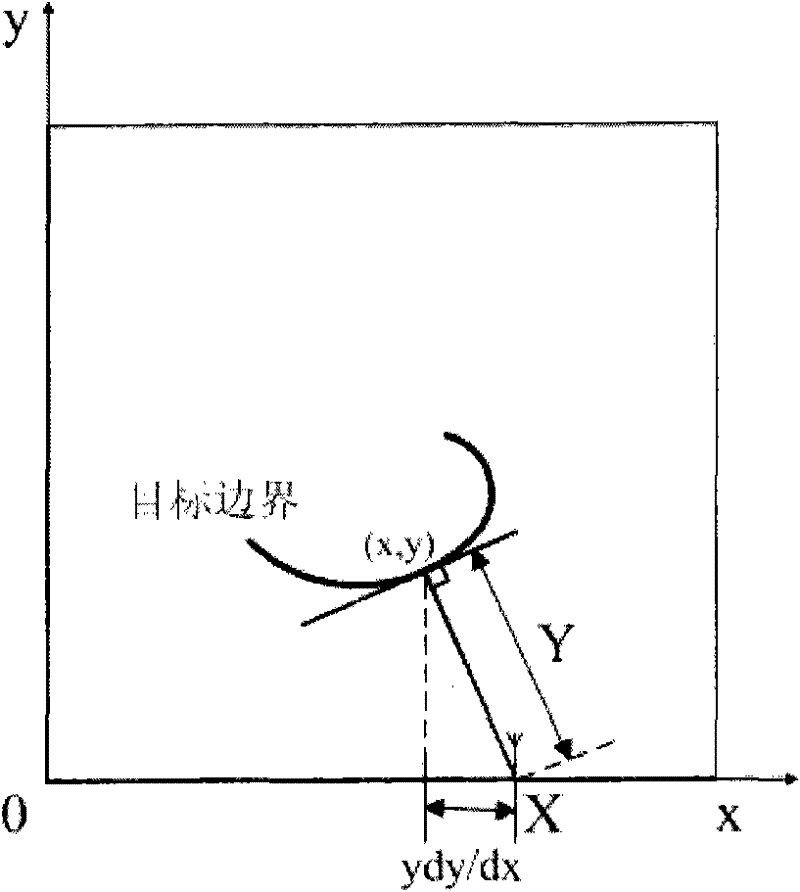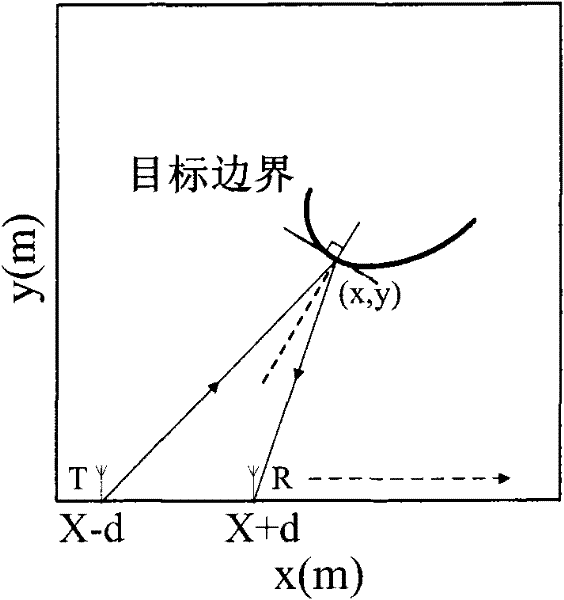Ultra-wideband radar human-motion-target imaging method based on IBST (Inverse Boundary Scattering Transform)
An ultra-wideband radar, human motion technology, applied in the direction of using re-radiation, reflection/re-radiation of radio waves, measurement devices, etc., can solve problems such as low computational efficiency
- Summary
- Abstract
- Description
- Claims
- Application Information
AI Technical Summary
Problems solved by technology
Method used
Image
Examples
Embodiment Construction
[0068] The present invention will be further explained in detail in conjunction with the accompanying drawings and specific embodiments.
[0069] See Figure 4 , in the ultra-wideband radar human moving target imaging method based on inverse boundary scattering transformation of the present invention, one send and two receive fixed antenna arrays are placed along the azimuth direction, and the transmitting antenna is placed between the two receiving antennas, then the method described in the present invention can be applied The target tracking imaging method processes the echo signal of the antenna array to form a target boundary image and calculate the target trajectory.
[0070] see Figure 10 , the ultra-wideband radar human body moving target imaging method based on inverse boundary scattering transformation of the present invention, comprises steps:
[0071] The first step is to establish a UWB radar moving human target imaging scene model and set the system parameters ...
PUM
 Login to View More
Login to View More Abstract
Description
Claims
Application Information
 Login to View More
Login to View More - R&D
- Intellectual Property
- Life Sciences
- Materials
- Tech Scout
- Unparalleled Data Quality
- Higher Quality Content
- 60% Fewer Hallucinations
Browse by: Latest US Patents, China's latest patents, Technical Efficacy Thesaurus, Application Domain, Technology Topic, Popular Technical Reports.
© 2025 PatSnap. All rights reserved.Legal|Privacy policy|Modern Slavery Act Transparency Statement|Sitemap|About US| Contact US: help@patsnap.com



